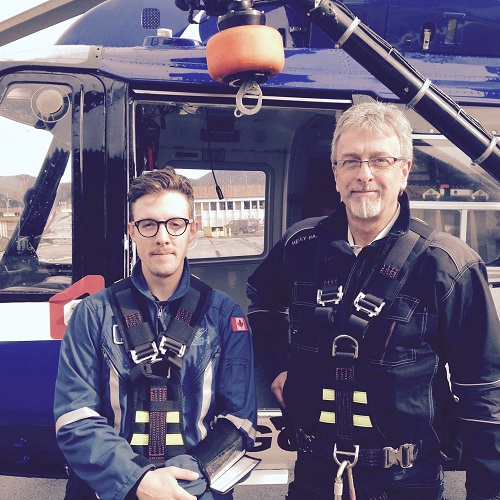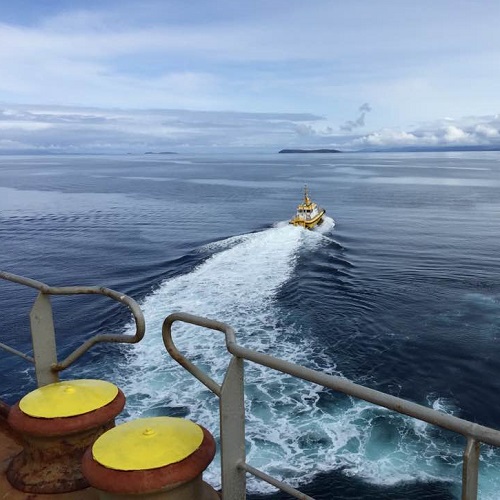Welcome to "Captain's Orders and Pilot"s Advice."
Rule 6
How many of you can instantly recognize Rule 6 as the “Safe Speed” rule? Or better yet, remember what it says? It is a very simple and most important rule, that shadows over every aspect of the safe operation of every vessel, on any body of water. Let's break it down.
RULE 6 -
“Every vessel shall at all times proceed at a safe speed so that she can take proper and effective action to avoid collision and be stopped within a distance appropriate to the prevailing circumstances and conditions.”
Simple right? Yet in my experience both as a professional mariner or pleasure craft operator, it is the most violated rule of the collision regulations, especially by pleasure craft operators. The Shuswap is no exception.
There can be no argument here, as most everyone seems to be in a hurry, to get to somewhere and get there as fast as they can. There isn’t anything inherently wrong with this most of the time. You have this fast boat, and you want to use it. There is no immediate threat of tangling with other boats, or sending a tsunami washing over people and docks on the shoreline, and you want to get to that coveted space of beach before someone else does, or maybe, you are in charge of the BBQ at the beach house and it’s almost supper time? No Matter the reason, it’s a big lake, so let’s get going! So, what is rule 6 telling us? To determine this, we need to look at it further.
V
Rule 6 continued-
In determining a safe speed the following factors shall be among those taken into account:
(a) By all vessels:
(i) the state of visibility,
(iii) the manoeuvrability of the vessel with special reference to stopping distance and turning ability in the prevailing conditions,
(iv) at night the presence of background light such as from shore lights or from back scatter of her own lights,
(v) the state of wind, sea and current, and the proximity of navigational hazards,
(vi) the draught in relation to the available depth of water.
(b) Additionally, by vessels with operational radar:
(i) the characteristics, efficiency and limitations of the radar equipment,
(ii) any constraints imposed by the radar range scale in use,
(iii) the effect on radar detection of the sea state, weather and other sources of interference,
(iv) the possibility that small vessels, ice and other floating objects may not be detected by radar at an adequate range,
(v) the number, location and movement of vessels detected by radar,
(vi) the more exact assessment of the visibility that may be possible when radar is used to determine the range of vessels or other objects in the vicinity.
Safe Speed — Canadian Modifications
(c) In the Canadian waters of a roadstead, harbour, river, lake or inland waterway, every vessel passing another vessel or work that includes a dredge, tow, grounded vessel or wreck shall proceed with caution at a speed that will not adversely affect the vessel or work being passed, and shall comply with any relevant instruction or direction contained in any Notice to Mariners or Navigational Warning.
(d) For the purpose of paragraph (c), where it cannot be determined with certainty that a passing vessel will not adversely affect another vessel or work described in that paragraph, the passing vessel shall proceed with caution at the minimum speed at which she can be kept on her course.
Hey, wait a minute, this isn’t so simple anymore! Isn’t it?
Determining what safe speed is, is clearly spelled out in the first part of the rule. The factors taken into account are common sense…
The visibility is bad, SLOW DOWN so that you can stop in time to avoid a collision.
There are a lot of boats around, moving in various directions, SLOW DOWN so you can more accurately determine if you are going to hit someone, or worse, they are going to hit you.
The manoeuvrability of that tug and barge, log tow or boat under tow, ahead is limited, give them some sea room and/or SLOW DOWN to avoid them.
It’s dark and there are a lot of background lights, you can’t see other boats easily without radar, and they can't see you. SLOW DOWN. This is a most common time that a mistake will be made in determining risk.
The state of wind, sea and current, and the proximity of navigational hazards, beckons the questions, can the other vessel(s) see me? Do I have room to SAFELY manoeuvre as required by the regulations? Does the other vessel? Is the water spray over my bow, affecting my visibility? Is that a sailboat? If the answer is yes, SLOW DOWN.
If I alter course to avoid a collision, is there enough water there to continue safely navigating? Is there enough water for the other vessel to manoeuvre safely as required by the regulations? In every case of uncertainty, SLOW DOWN.
The use of radar is entirely another subject, and for the scope of this article, we will continue as if you are not equipped with radar.
OK, we have now determined the common action to be taken (SLOW DOWN), and the circumstances taken into account in determining safe speed, again SLOW DOWN! Now let’s focus on the Canadian Modification, which is critical to all aspects of what safe speed is. This is without doubt, the most ignored part of rule 6 committed by small vessel operators. So why is that? What does it say? Most importantly, how is it applied in circumstances that involve damage, injury or loss of life or vessel?
Why so many vessels ignore this critical component of rule 6, probably has many reasons, the most likely being, they are unaware of it entirely, forgotten about it, or could care less. No reason whatsoever, is defense for you doing damage to private property, causing injury or death as a result of not being familiar or, not slowing down. Your wake is the usual culprit in causing damage. Your speed and/or wake is the usual culprit in causing injury or death.
Deaths are more likely to occur to persons/CHILDREN in the water or collisions with other vessels because a vessel was going too fast and could not determine, or see, the impending tragedy that was approaching. Deaths have occurred many times because of not slowing down, so SLOW DOWN!
The faster you go, the harder you hit, the larger your wake. The larger your wake or speed, the more likely it will have an adverse affect on your fellow boaters, persons/children in the water, property, the environment and even marine life. Not to mention, it is dangerous, extremely annoying and inconsiderate!
In conclusion, you are responsible for the speed of your boat AND the wake that it throws. Should you ever be held accountable for not operating your vessel at a safe speed, appropriate to the prevailing circumstances, and you cause an incident by not doing so, you could be held liable in a court of law. This is entirely avoidable… if you just SLOW DOWN!
Safe sailing everyone. Feel free to add your experiences on this topic, questions or critique on our Laketow Marine Facebook page.
Comments? Questions? Critique?
Join us on our Facebook page to comment question or critique our blogs. While you are there, like and follow us for all our thought provoking insights and advice on baoting.
Click here to go to our Facebook Page
numbers
By the numbers
41
Years of
Maritime Excperience
Maritime Excperience
1500+
Vessels
served on
served on
#1
Safety on the water
can spare no expense
can spare no expense







